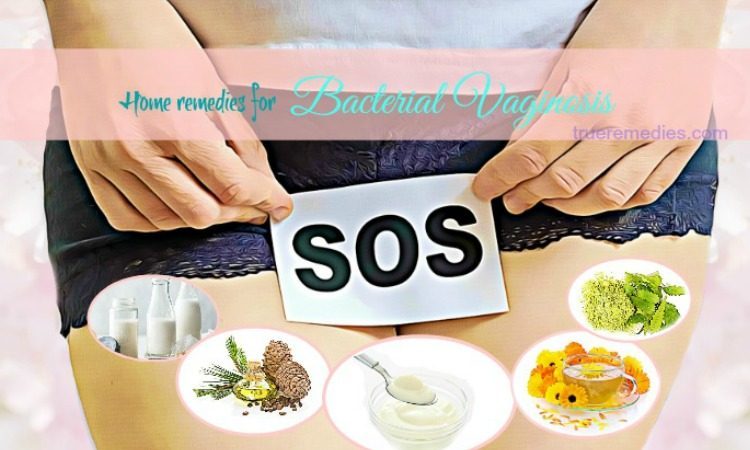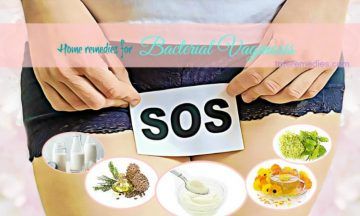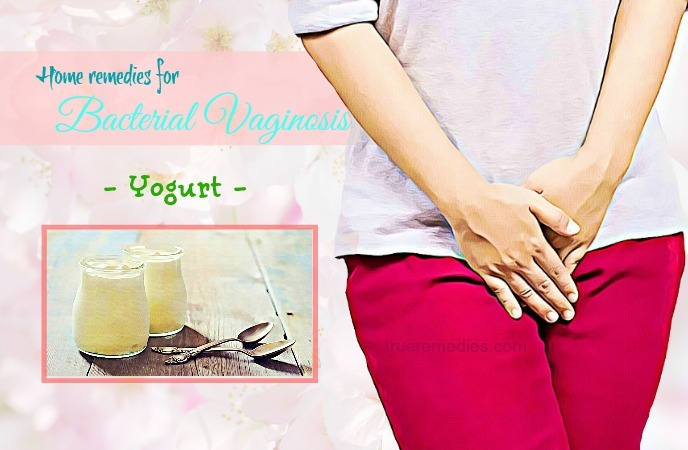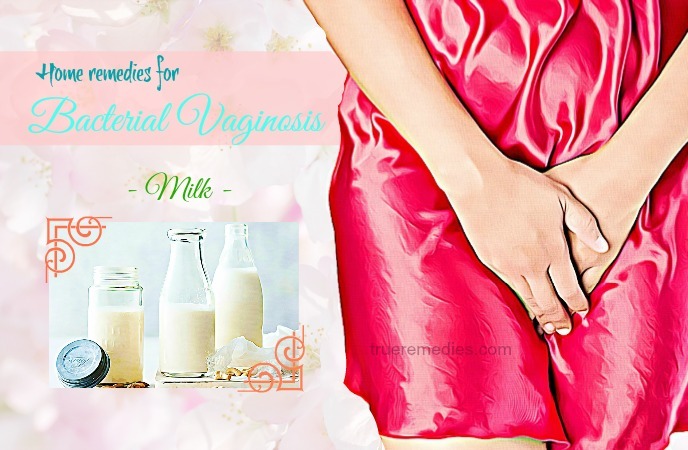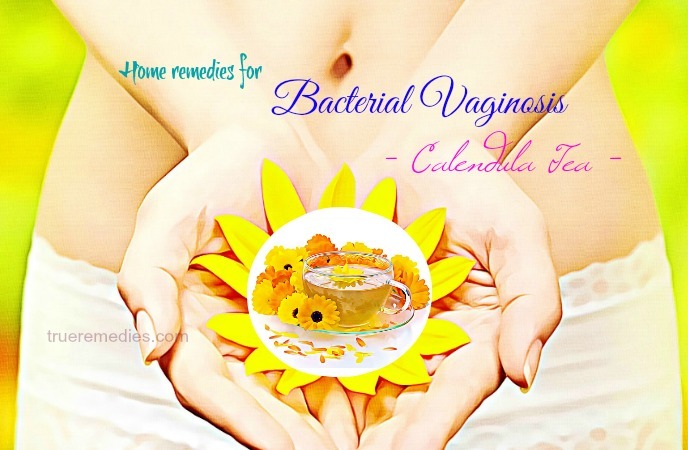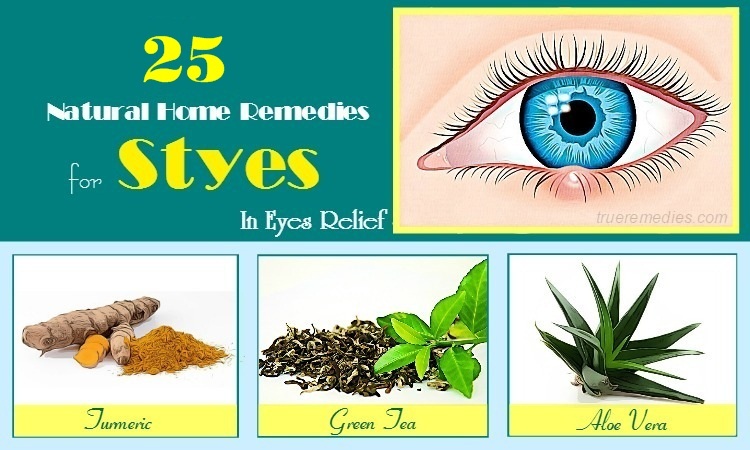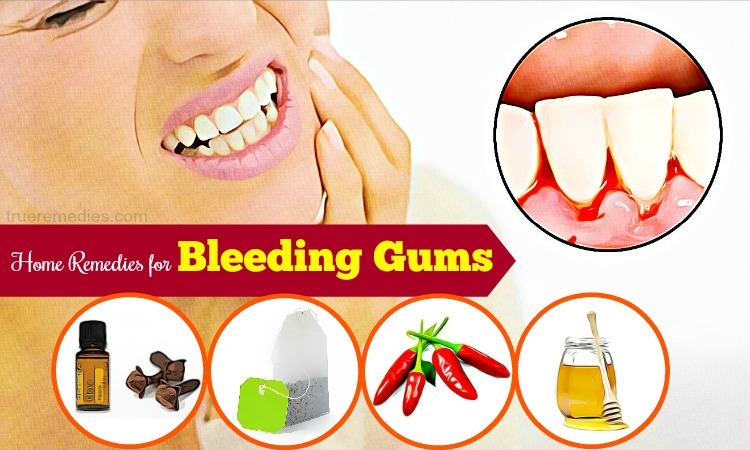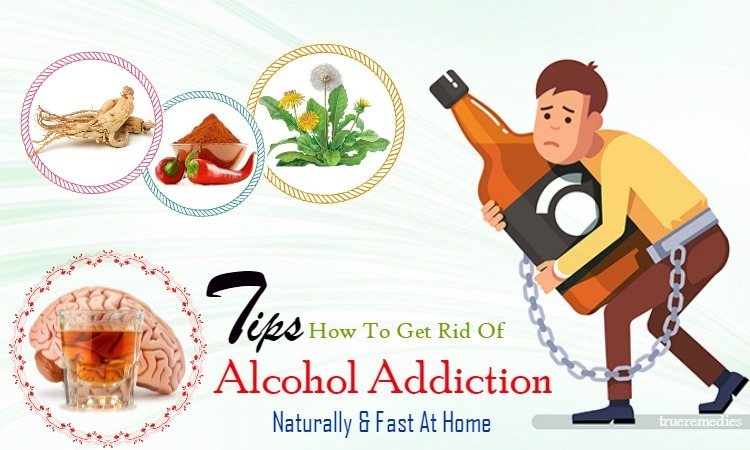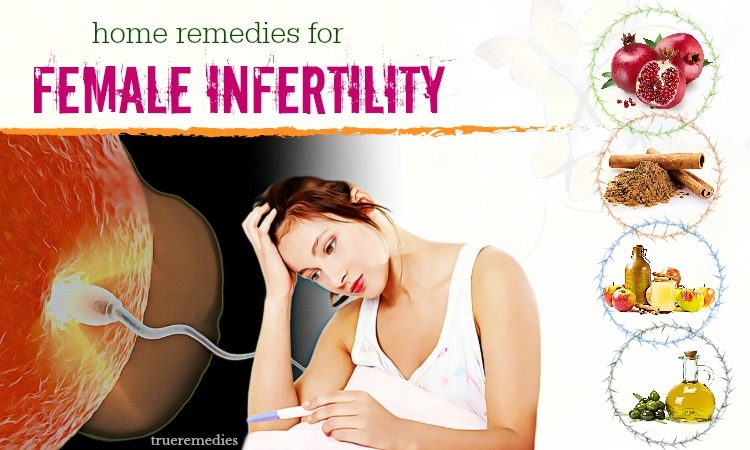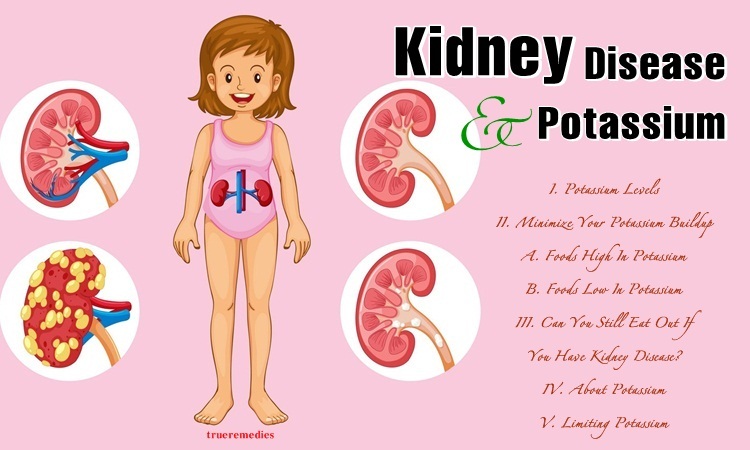updated: 11/19/2019
CONTENTS
Bacterial vaginosis, a common disease in women, is a disease that the balance of bacteria within the vagina gets disrupted. Oftentimes, bacterial vaginosis does not cause vaginal itching or soreness; but it usually results in unusual vaginal discharge. In case you or any of your family members are suffering from this condition, then you may want to know home remedies for bacterial vaginosis. However, prior to grabbing such effective treatments, you need to cover some basic information about this condition.
- 37 Tips On How To Treat Bacterial Infection Without Antibiotics
- 23 Ways How To Get Rid Of Bacterial Vaginosis Naturally At Home
- 17 Tips On How To Get Rid Of Vaginal Odor Naturally At Home
What Is Bacterial Vaginosis?
Bacterial vaginosis basically is a mild infection of the vagina that results from bacteria. In normal cases, there are a large amount of “good” bacteria and some of the “bad” one in the vagina. The good ones will help you control the developments of the bad ones. Those women suffering from bacterial vaginosis have an imbalance of these bacteria. Women in their reproductive years are prone to have this condition, yet it could impact women at any age.
Bacterial vaginosis is often a mild issue that might disappear on its own in just several days. However, it probably causes more serious issues.
What Are Causes Of Bacterial Vaginosis?
In regard to what causes bacterial vaginosis, experts seem to be unsure about this. At this time, it seems to be that a particular combination of multiple bacteria together causes bacterial vaginosis. Bacterial vaginosis features a decrease in the amount of normal hydrogen peroxide-producing Lactobacilli within the vagina. At the same time, there is an enhancement in the concentration of other kinds of bacteria, particularly anaerobic bacteria, which grows in the oxygen absence. Consequently, the process of diagnosing and treating this condition isn’t as simple as identifying and eliminating a particular kind of bacteria. The reason why the bacteria combination results in the imbalance is unknown.
Here are some specific things causing bacterial vaginosis.
- You can avoid suffering from this condition if you limit your sex partners and avoid smoking or douching.
- It is worth noting that bacterial vaginosis is much more common in sexually active women.
What Are Symptoms Of Bacterial Vaginosis?
In fact, a lot of women with bacterial vaginosis show no symptoms. Here are some common symptoms of bacterial vaginosis.
- Grayish white and thin vaginal discharge
- An increased amount of vaginal discharge
- Unpleasant fishy or foul-smelling vaginal odor
- Abnormal odor and discharge of the vagina after having sexual intercourse
- Pain when having sexual intercourse or urinating
Bacterial vaginosis symptoms, if present, could happen at any time of menstrual cycles; maybe before, during, or after the menstrual period. The vaginal discharge amount, which is reckoned as normal, may vary among women. Thus, any level of abnormal vaginal discharge for a specific woman should be paid attention.
What Are Risk Factors?
Certain risk factors for developing bacterial vaginosis include:
- Recent antibiotic uses
- Cigarette smoking
- Vaginal douching
- New or multiple sex partners
Nonetheless, the role of sexual activity towards this condition is not completely understood. Although most experts believe that this condition does not happen in women who don't have sexual intercourse, others think that this condition could still develop in those women.
Is It Contagious?
Although bacterial vaginosis is not reckoned as a contagious issue, having sex with a new sexual partner or multiple sexual ones may boost the risk of developing bacterial vaginosis. This means that the spread of bacteria among people may change the balance of both good and bad bacteria within the vagina, which leads to bacterial vaginosis.
Bacterial vaginosis rarely affects girls who have never had sex. Moreover, you cannot get this condition from toilet seats, hot tubs, bedding, swimming pools, or simply from touching those contaminated objects.
When To See A Doctor?
Bacterial vaginosis is rarely associated with serious complications, so the majority of women who want to try out home remedies for treating bacterial vaginosis for safety. However, you should see a doctor if:
- You are pregnant. Bacterial vaginosis is linked to miscarriage, premature labor, low birth weight, and other pregnancy complications. Proper treatment could decrease the risk of this disease.
- There are some other symptoms, such as intense pain, a burning sensation when urinating, etc.
- Using home remedies for this issue are failed. Some other infections may have symptoms that mimic this condition. If not treated timely, these infections could worsen.
- You are not sure if the problem is bacterial vaginosis. For instance, women, who have a history of recurring yeast infections, had better consult a doctor before starting any home treatment. Some companies now promote OTC vaginal tests, which might be a possible option for women who are not sure about the symptoms of this issue.
Oftentimes, a doctor could diagnose bacterial vaginosis easily. The use of antibiotics can clear the infection, and they rarely come with any significant side effects.
28 Natural Home Remedies For Bacterial Vaginosis Symptoms
Although about 1/3 of bacterial vaginosis cases may disappear on their own, it is still recommended using some methods below to avoid developing any complications.
1. Yogurt
This is among the simplest and most common home remedies for bacterial vaginosis. Thanks to beneficial bacteria called lactobacillus, yogurt may combat bad bacteria and maintain a healthy balance of pH level in the vagina[1] [2] [3].
Method 1:
- Dip a cotton pad into the yogurt
- Apply it to your affected area
- After 30 minutes, rinse your vaginal area with plain water
- Do this method 3 times per day until you get good results
Method 2:
- Dip a tampon into the yogurt
- Insert it into your vagina for 1-2 hours
- Repeat this twice per day
Also, do not forget consuming 2 cups of plain yogurt every day to restore the pH level balance of the vagina and reduce the development of bad bacteria. It is the best to make use of plain yogurt, particularly if you apply it directly to the inside area of your vaginal area. Plain unpasteurized yogurt has live Lactobacillus acidophilus cultures. Even if you decide to eat yogurt, go for the plain unpasteurized type.
Alternatively, not everybody likes yogurt. You could also take advantage of the right type of probiotics from acidophilus milk. It could be found in most grocery stores, and it is very good for people with difficulty in digesting traditional store-bought milk products.
Or, you could also take a supplement as an alternative to yogurt. Actually, there are many types of supplements containing multiple vitamins, nutrients, and minerals that could treat bacterial vaginosis or prevent its outbreak. Magnesium, calcium, iron, niacin, vitamin A, and B6 are some of such beneficial things to help balance the bacteria in your body.
2. Tea Tree Oil
Due to natural antifungal and antibacterial compounds[4], tea tree oil is one of the effective home remedies for bacterial vaginosis. This will help kill the germs causing this condition. Also, it helps to get rid of the smell associated with bacterial vaginosis.
In spite of the limited number of research about the application of tea tree oil on bacterial vaginosis removal, it also helps to treat other infections, such as vaginal yeast infection[5] [6].
People may be allergic to tea tree oil. You should rub some on your forearm to test for a reaction. In case there is not any reaction within 24-48 hours, you can use it. Nevertheless, the oil may burn the skin. Importantly, people had better keep in mind that it is not safe for women during pregnancy. Women should consult a doctor first before using tea tree oil treatments.
Method 1:
- Add several drops of tea tree oil to a small bowl, then stir well.
- Rinse your vagina with this solution.
- Do it once per day for 3-4 weeks or so to get the best results
Method 2:
- Put 3 drops of tea tree oil in 3 cups of white vinegar
- Add this mixture to your warm bath water
- Soak yourself in this solution for 30 minutes or so
- Do this every other day for 1-2 months if necessary
3. Boric Acid
Researchers suggest that boric acid could combat bacterial vaginosis in women with recurrent infections[7] [8].
According to a 2009 research, antibiotic treatment including 600 mg of boric acid inserted directly into the vagina. Women using boric acid had higher success rates than those who did not. But, this study cautioned that further research should be carried out and validated.
Note: Pregnant women should avoid using this.
4. Apple Cider Vinegar
Apple cider vinegar is commonly used for treating bacterial vaginosis because it is much better than using commercial antibiotics. Besides, this ingredient is slightly acidic, yet it is not acidic enough to harm on your body. It could be used safely as long as you dilute it somehow.
Vinegar has been used for many years as a natural disinfectant and a treatment for various conditions such as jellyfish stings, diabetes, etc. A 2018 study found that apple cider vinegar has antimicrobial effects on E-coli, C. albicans, and S. aureus[9]. According to an article in 2014, it contains acetic acid that is effective in inhibiting the growth of bacteria[10]. According to an article in 2017, this vinegar is also effective in treating vaginal candida infection[11]. The results of a study in 2016 suggest that treatments based on lactic acid may bring some benefits in bacterial vaginosis treatment, and apple cider vinegar is rich in lactic acid[12].
Method 1: Douching
- Add 1 teaspoon of apple cider vinegar to 2 cups of water
- Put it in a douching bag
- Use it for douching your vaginal area once per day
- Keep following the method for 1-2 weeks to achieve good results
Note: If you douche too much, it may flush out good and bad bacteria. Thus, avoid extra douching.
Method 2: Bathing
In case you use apple cider vinegar for bathing, then you should avoid overuse it. You should increase your vaginal acidity little by little because increasing it too much will cause more problems than expected. In fact, too much apple cider vinegar may result in painful burning and itching sensations when you sit in the bathtub.
- Cleanse your bathtub and run a shallow, warm bath
- Add ½ cup of apple cider vinegar to your bathwater
- Soak in it for 20 minutes and repeat this process daily till your problem goes away
Method 3: Consuming
Drinking apple cider vinegar for bacterial vaginosis seems much better to douche with or bath in it. But, you need to dilute this ingredient with water to avoid harming your stomach.
Method 4: Tampon Soak
- Soak a tampon in the mixture of apple cider vinegar and water.
- Insert it into your vagina and leave it there overnight
- Dispose of it in the next morning and repeat this nightly to dispel your symptoms
Remember to use the unfiltered apple cider vinegar to reap its benefits.
5. Garlic
One of the most easy-to-find home remedies for bacterial vaginosis is using garlic. This spice is a natural antibiotic that could relieve bacterial vaginosis symptoms. The antifungal properties of garlic[13] also keep bad bacteria within your vagina in check. According to a study in 2014, taking garlic supplement tablets could be an effective treatment for bacterial vaginosis[14].
A fresh garlic clove can kill yeast thanks to its antimicrobial compounds[15] [16]. In a study in 2014, garlic has been proven to kill off infections resulting from bacteria. Actually, taking garlic tablets to handle bacterial vaginosis is as effective as using metronidazole – a drug that is usually prescribed for infections in the vagina. Nonetheless, unlike metronidazole, using garlic does not cause any side effect.
Taking garlic also prevents the recurrence of bacterial vaginosis.
6. Hydrogen Peroxide
Hydrogen peroxide is commonly found in households, which works wonders to help keep your bacterial vaginosis at bay. According to studies, hydrogen peroxide can be used as a valid alternative to methods for recurrent bacterial vaginosis with low costs and real therapeutic efficacy[17] [18]. Hydrogen peroxide is an alternative to those conventional treatments for infections in the vagina. Being a natural disinfectant, hydrogen peroxide could eradicate the major symptoms of bacterial vaginosis by killing bad bacteria. Besides, it facilitates the restoration of the pH balance of the vagina. Hydrogen peroxide is used as a natural antiseptic, and it also helps eradicate irritations, causing inflammation and releases oxygen when applied to the skin.
Method 1:
- Lie and relax
- Mix water and hydrogen peroxide 3% with a ratio of 1:1
- Squirt and keep the liquid within your vaginal area for 3 minutes before draining it
- Repeat this routine every day to get the best results
Method 2: Use a tampon
- Mix equal amounts of water and hydrogen peroxide 3% together
- Apply the mixture to the tampon
- Insert it into your vagina. Crouch as if you are peeing or pushing in the tampon.
- Leave it there for not more than 30 minutes
- Repeat this daily until your problem goes away
This way is also effective in removing the infection and fishy smell caused by it.
Notes:
- Do not overuse hydrogen peroxide because it might result in irritation and dryness of the vagina.
- The active ingredients in hydrogen peroxide may cause stinging, redness, and irritation.
- Contact your pharmacist or doctor instantly if you find trouble breathing and dizziness when using this ingredient.
- It is safe to use for pregnant or breastfeeding women.
7. Milk
Milk has Lactobacilli bacteria, making it an excellent natural treatment for bacterial vaginosis. Moreover, using milk also strengthens the immune system. Specifically, drinking milk every day may help restore the flora for your vagina; therefore, it will create a hard environment for the development of microbes[19]. Also, you could add turmeric powder to the milk and have this mixture daily to lessen bacterial vaginosis symptoms.
Directions:
- Taking a little amount of chilled milk and soak a tampon into it
- Insert it into your vaginal area
- Leave it there for 1-2 hours and remove it off
- Do this method once per day
8. Coconut Oil
As coconut oil has antiviral and antibacterial properties[20] [21], it may defeat the germs resulting in bacterial vaginosis[22]. You can use it as a topical treatment for bacterial infections within your vaginal area. In accordance with a study related to the antimicrobial effect of coconut oil, it was found that coconut oil has lauric acid that is effective in combating many types of infections.
Method 1:
- Apply a little organic coconut oil directly to your vaginal area for 3 times per day
- Re-apply this method daily to alleviate your condition
Method 2:
- Warm up one tablespoon of coconut oil to get the liquid form
- Add 2-3 drops of tea tree oil to it and mix them well
- Soak a tampon in coconut oil and insert it into your vagina for about 2 hours
- After that, remove it off
- Repeat this regularly to see good results
Or, you can also add coconut oil to your daily diet to speed up the healing process.
9. Vitamin D
A study discovered that a vitamin D deficiency is associated with bacterial vaginosis in those pregnant women[23] [24]. This study found that about 93% of pregnant women with sufficient amounts of vitamin D also reported bacterial vaginosis condition. It is very important for pregnant women to understand this as bacterial vaginosis in pregnancy is likely to cause complications, such as preterm delivery.
Thus, you can prevent this condition by supplementing enough vitamin D for yourself, from foods or from supplements. Your doctor will determine whether or not you need to take a vitamin D supplement.
10. Oregano Oil
The oil from oregano may be used to defeat the bacteria (germ), causing bacterial vaginosis. Considered as one of the best natural antibiotics, oregano oil was shown to be effective against most strains of bacteria.
Oregano oil contains a high concentration of carvacrol[25]. In some studies, carvacrol has been proven to be a strong antibacterial compound that can help to fight against various strains of bacteria[26] [27] [28]. It works by havocing cell membranes of bacteria and preventing them from replicating The carvacrol in oregano oil acts as a natural antibiotic; it may kill harmful bacteria and keep good probiotic bacteria intact.
Directions:
- Mix 2-3 drops of oregano oil with 1 tablespoon of organic coconut oil
- Apply the mixture to your vagina and wait for 2 hours
- Do this method until you notice an improvement in your condition
11. Neem Powder
Thanks to its potent antibacterial effects, neem is recommended for many cases of dermatological issues, including bacterial vaginosis. Neem, in essence, is a traditional medicinal tree native to India. Different parts of the neem tree and its products have been used in India for their medicinal properties until now. Over the past 60 years, studies have learned the active compounds available in Neem and validated their effects and biological activities, leading to an interest in this tree all over the world. Neem is also used in Ayurvedic system of medicine. Its seed oil, fruits, bark, roots, and leaves are all used for medicinal purposes. The products derived from neem have been proven to exhibit immunity promoting, antidiabetic, anti-inflammatory, antifungal, antimalarial, anti-carcinogenic, and antiviral properties[29] [30] [31].
Traditionally, the neem tree has been used in India in the form of leaves (crushed, raw, or cooked), fruit, bark powder, crushed seed, seed oil, or twigs for chewing. Neem seed oil is a powerful medicine for different infections. It is a highly concentrated form of neem extracts. Oftentimes, neem oil is used externally for infections while oral use of low dose has been shown to be effective for intestinal worms and oral and intestinal candida infection[32].
Note: Pregnant women or women who are trying to conceive should avoid using neem oil.
You just need to take neem in the powder form and mix with water with a ratio of 1:1, then apply it to your vaginal area. Alternatively, the application of neem oil in the vagina and surrounding areas also brings similar effects.
12. Consume Foods Containing Folic Acid
It is highly recommended consuming foods having folate if you are looking for simple but effective home remedies for bacterial vaginosis[33] [34]. It will help protect yourself from problems related to bacterial vaginosis. Such foods are avocado, dark leafy greens, broccoli, asparagus, and spinach.
13. Black Walnut
Black walnut has antibacterial property[35], thus curing your condition naturally. Apply a tincture of black walnut to help remove bacterial vaginosis. Or, you can take black walnut supplements daily to alleviate the discomfort accompanied by this infection.
14. Goldenseal
Goldenseal root, also called Hydrastis Canadensis, is used as a complementary therapy for bacterial vaginosis. Goldenseal comes with a variety of uses in treating illnesses ranging from wounds to eye infections[36] [37]. The efficacy of this plant derives from an active constituent – berberine that contains antiseptic and antibacterial effects[38]. Using goldenseal will give your immune system a boost and inhibit infection-causing bacteria. In fact, wild goldenseal is an endangered plant, making the powder form of this plant expensive.
According to the National Institute of Allergy and Infectious Diseases, it is warned that women experiencing symptoms of vaginosis had better see a health care professional as these symptoms could indicate a certain serious issue, including the availability of a sexually transmitted infection. But you can also use goldenseal after having an appropriate diagnosis.
Directions:
- Mixing ½ teaspoon of goldenseal with ¼ teaspoon of salt and then put them in a cup of warm water
- After the douche settles, strain the mixture to eliminate suspended particles
Note:
- Consult your doctor before using goldenseal for use and dosage.
- Sometimes, douching might exacerbate or result in vaginal infections. Goldenseal powder might irritate your vaginal skin. In case your problem worsens after using this herb, consult your doctor instantly.
- Pregnant or breastfeeding women or people with liver or heart conditions should avoid this plant.
15. Fenugreek
This is one of the most beneficial home remedies for bacterial vaginosis because it helps improve the vaginal pH level and boost the healing process by defeating bad bacteria and fighting inflammation[39].
Method 1:
- Soak 2 tablespoons of fenugreek seeds in 1 cup of water
- Leave it there overnight and have this water on an empty stomach
- Repeat this routine daily for 1 month
Method 2:
- Grind 2 tablespoons of fenugreek seeds to get a good paste
- Put 1 teaspoon of fenugreek powder in a cup of yogurt
- Mix them well and have it twice per day
Method 3:
- Add 1 teaspoon of fenugreek seeds into a cup of hot water
- Leave it there for about 5 minutes
- After straining the liquid, add 1 teaspoon of honey into it
- Have this solution and repeat this routine 2-3 times per day
16. Calendula Tea
You can also make use of calendula leaves to eliminate bacterial vaginosis symptoms. It is because this plant has anti-inflammatory properties[40] that are effective for decreasing the irritation and inflammation due to the infection.
Directions:
- Boil up a proper amount of calendula leaves with water to make a tea.
- Soak a clean cloth in the tea and squeeze out excess liquid somehow
- Rub it on your vagina gently to relieve redness and irritation associated with a bacterial infection.
- Repeat this routine 2 times per day
17. Chamomile
Using chamomile tea helps to reduce burning sensation, inflammation, and pain accompanied by bacterial vaginosis. Thanks to anti-inflammatory properties[41], chamomile may also ease the pain while soothing irritation substantially.
Directions:
- Add a chamomile tea bag to a cup of hot water
- Let it steep for 2-3 minutes and then cool down to the room temperature
- Place the bag on your vagina area and let the tea infusion flow into your vaginal canal to relieve the symptoms
- Do it once or twice per day for 2 weeks or till you notice an improvement.
18. Aloe Vera
Thanks to therapeutic and soothing effects of aloe vera gel[42], it is highly beneficial for relieving itching sensation[43] and unbearable inflammation in the vagina[44] [45].
Directions:
- Wash a fresh leaf of aloe vera with plain water
- Cut it into pieces and take the gel out
- Apply the gel to your infected area
- Repeat this routine daily for 1-2 weeks until your symptoms go away
To boost the healing process, you can also take ½ glass of aloe vera gel.
19. Echinacea
In regard to home remedies for bacterial vaginosis, echinacea seems little-known, but there are specific reasons why it is available in this list. In fact, frequent bouts of bacterial vaginosis could be an underlying cause of low immunity. Thus, you can use the echinacea herb to strengthen your immune system. This is a powerful herb with medicinal uses thanks to its potent immunity-boosting properties[46]. These effects may help your body fight off infections naturally. Additionally, this herb also suppresses the pain and itching sensation much faster. Furthermore, the herb is beneficial in decreasing the potential risks of countering bacterial vaginosis once again in the future[47].
Directions:
- Take 2 ml of Echinacea tincture orally
- Do it 3-4 times per day for about 2 to 3 days
If the symptoms do not get better in 2 days, you should increase the dosage to about 3 ml for reaching your purpose.
Preventative Tips:
To prevent troublesome symptoms of bacterial vaginosis, it is necessary to keep the area clean and follow good hygiene. The vagina is a self-cleaning organ that does not require soaps, douches, or perfumes. The use of such products may affect the imbalance of vaginal pH levels. This will trigger bacterial vaginosis and may cause a foul odor in the vagina.
To reduce the risk and avoid exacerbating an existing your infection, you can follow some tips below:
- Wear breathable, cotton underwear to maintain good vaginal hygiene.
- Wash your underwear daily and thoroughly.
- Take warm baths.
- Regularly clean bed sheets, towels, pillows, and other items for your daily use.
- Avoid using scented products on your vagina, including scented soaps or tampons.
- Avoid douching because this will change the vaginal ecosystem and trigger irritations.
- Never insert soap into your vagina. It is often safe to use unscented soap on your vulva.
- Wipe from front to back to avoid sweeping stool into your vagina. Avoid using objects which have been in your anus, such as sex toys, in your vagina.
- Keep your vaginal area dry. Avoid sitting in wet underwear or swimwear. Pat your vagina dry after showering.
- Wash your hands before touching your vagina, particularly when inserting objects, like menstrual cups or tampons.
Now, you have been known some of the most natural and effective home remedies for bacterial vaginosis. Using some of these 28 natural treatments and you will treat your issue in no time. Feel free to share your experience with us after following the guidelines here and let us know which works best for you.
To have more similar tips, do not hesitate to visit our main Home Remedies page.

